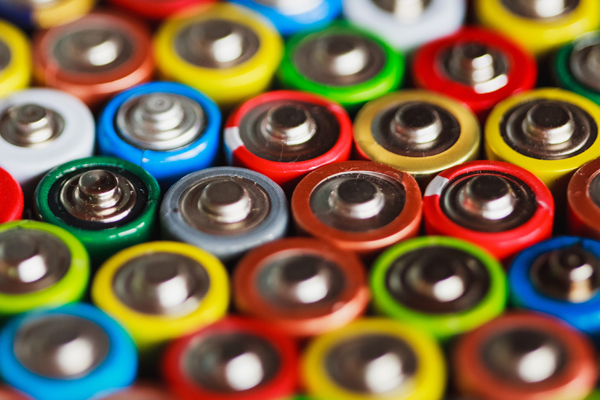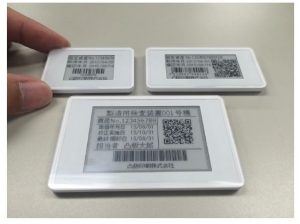Embedded vision summit badgeToday Given that many Internet of Things (IoT) implementations seek to remotely deploy large numbers of devices, one of the biggest challenges is power. With mains often unavailable, the IoT devices must run off batteries and use as little power as possible. But even this is imperfect: batteries eventually run out and must be replaced or recharged. There’s also the complexity of needing to monitor charge levels, to avoid downtime caused by dead batteries.
What if it was possible to eliminate these challenges, and create a way of perpetually powering IoT devices? It may sound like the stuff of sci-fi, but there are now ways of harvesting energy that are sufficient to power a useful IoT device. Toppan Printing Co. Ltd., for example, recently announced its batteryless e-paper display (EPD) with a built-in RFID tag – all powered using harvested RF energy.
By designing the device correctly and using the right energy-harvesting method, it’s perfectly feasible to create batteryless devices that can run near-enough forever. For those buying and deploying these devices, the overheads associated with maintaining a large fleet of battery-powered devices are eliminated.
Let’s look at the IoT power challenge – and how to solve it – in more detail.

Figure 1: This graph shows the current used during an update to an e-paper display
(Source: Pervasive Displays)
The problem with battery-powered devices in the IoT age
Batteries are key to our modern, wireless ways of living and working. Everything from our laptops to our smartphones and wearables runs off batteries. Plugging these devices in overnight has become part of our routines – a small price to pay for the advantages of cord-free use.
In the same way consumer electronics have gone wireless, so have industrial devices, thereby paving the way for the IoT. We can now roll out large numbers of sensors and other kit in remote locations, without worrying about power or network cabling.
But this creates a new challenge. Keeping our consumer device batteries charged is workable because there are usually only a few pieces of kit, and they’re not usually critical to our existence (if you can’t check your personal social media accounts for a few hours, it’s not the end of the world).
It’s a different story when you look at industrial applications and the IoT. Firstly, device downtime may have more serious consequences. Operators of battery-powered networks therefore need to monitor charge levels and periodically recharge or replace batteries to ensure uptime.
Secondly, industrial and IoT deployments typically include tens or hundreds of devices. Maintaining this number of batteries represents a major overhead.
Energy-harvesting: Ideal for the IoT
Energy-harvesting is an ideal way for IoT kit to reduce or even eliminate its reliance on batteries. And by blending this approach with a low-power design, it’s possible to create kit that can run almost perpetually.
To achieve this goal, the first step is to select the most appropriate means of harvesting energy for the use case. Solar or thermal may seem obvious choices, but can be inconsistent in their delivery of power. The source of energy needs to be available when the device is being used.
At the same time, the device needs a low-power design – and this goes beyond simply using low-power components. Ultimately, it must be able to operate within a limited power budget.
An example of good batteryless device design is the RF-based contactless smartcard. Inside, they contain a memory chip and antenna, which performs the dual purpose of communicating and harvesting energy. Most of the time, the card is ‘off’, and uses no power. But when it comes within the RF field of a reader or writer device, the card is energized, enabling the reader/writer to communicate with it wirelessly.
Because the card only needs power to perform read or write operations, RF-based energy harvesting is ideal: there will always be an RF reader/writer as a source of power. And if designers keep to standards, including NFC or RFID, they know what power budget their card must work within, which simplifies the design process.
Smartcards for authentication or contactless payments represent one of the biggest and most high-profile uses of RF energy-harvesting, but the technique could be used in many other scenarios. Sensors, thermometers or even displays can be powered using RF-harvested energy.
E-paper: the display technology that doesn’t require a battery
Made famous by the Kindle ebook reader, e-paper is a particularly interesting technology for manufacturers of batteryless industrial or IoT devices, because it enables them to incorporate displays into their designs.
E-paper uses very little power: where traditional active-matrix LCDs need a power-hungry backlight to make the image visible, e-paper uses electrophoretically charged physical ink particles to create an image, off which ambient light can reflect. Consequently, the content of an e-paper display is readable without a backlight. Moreover, where LCDs require a constant current to display even a static image (due to their continual need to refresh), e-paper is bistable, meaning once an image is in place, it consumes no energy. Power is only required to change what’s shown on an EPD. Better still, the current required to update modern e-paper displays, such as those from Pervasive Displays, can be as little as 2 mA.
Because e-paper doesn’t require a lot of energy, and what’s on the display remains visible even in the absence of a power source, it’s perfect for use in industrial and IoT scenarios. It also means it’s ideal for RF, thermal or solar energy-harvesting.
The Toppan batteryless EPD with RFID tag
While energy-harvesting can’t be used in every situation, it’s sufficient to drive some surprisingly sophisticated devices. Take Toppan Printing Co. Ltd.’s new batteryless EPD with a built-in RFID tag. This gives the dual benefit of being readable by machines and humans.
The device works using RF energy harvested from the NFC reader or writer. It’s available with displays between 1.44 and 2.7 inches, and is under 7 mm thick. It has sufficient memory to store three images, which can be shown on its EPD, as well as 884 bytes of RFID data.
Toppan’s batteryless EPD is aimed at the logistics and warehousing markets, where it can take the place of paper labels in manufacturing and to manage assets or inventories. Thanks to the built-in RFID facility, the tag is also machine-readable, thereby enabling easier and automated tracking. Crucially, because it doesn’t require a battery, the device can be used for large-scale deployments without incurring unsustainable maintenance overheads.
The exciting opportunity for IoT device designers
Batteries are an effective way of powering many consumer electronics devices, but in IoT and industrial scenarios, they’re not necessarily suitable. With the need to deploy at scale and with mains power typically unavailable, the overhead of periodically recharging or replacing batteries would quickly become unsustainable.
But by using modern RF, solar or thermal energy-harvesting with low-power components in low-power designs, manufacturers can now create batteryless devices. And by incorporating e-paper displays into their kit, designers can add whole new ways for humans to interact with industrial and IoT gear, free of the challenges that come with battery-reliant devices.
Scott is CEO of Pervasive Displays and has over a decade of experience in software in addition to 12 years working in displays businesses. During his career, Scott has been a founding partner at four start-up companies, including Pervasive Displays. Scott sits on the board of several other technology businesses as a consulting partner. He was a board member of One Laptop Per Child (OLPC), which looks to provide children in developing countries with a rugged, low-cost, low-power, connected laptop. Scott has an MBA from the Haas School of Business at the University of California, Berkeley as well as a BA from the University of Michigan at Ann Arbor, US.








